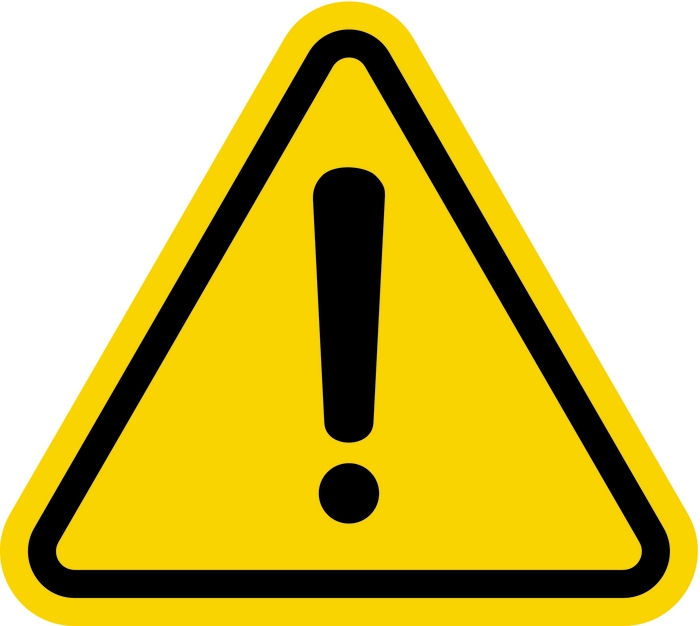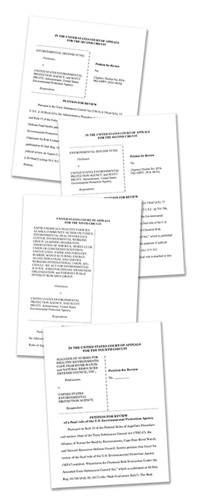Advertisement
Grab your lab coat. Let's get started
Welcome!
Welcome!
Create an account below to get 6 C&EN articles per month, receive newsletters and more - all free.
It seems this is your first time logging in online. Please enter the following information to continue.
As an ACS member you automatically get access to this site. All we need is few more details to create your reading experience.
Not you? Sign in with a different account.
Not you? Sign in with a different account.
ERROR 1
ERROR 1
ERROR 2
ERROR 2
ERROR 2
ERROR 2
ERROR 2
Password and Confirm password must match.
If you have an ACS member number, please enter it here so we can link this account to your membership. (optional)
ERROR 2
ACS values your privacy. By submitting your information, you are gaining access to C&EN and subscribing to our weekly newsletter. We use the information you provide to make your reading experience better, and we will never sell your data to third party members.
Policy
California Moving To Change Its Chemical Warning Labels
Proposal to overhaul Proposition 65 labeling statute faces opposition
by Britt E. Erickson
May 18, 2015
| A version of this story appeared in
Volume 93, Issue 20

In California, elevators, airports, restaurants, and even Disneyland all greet visitors with posted signs warning of the presence of chemicals known to cause cancer, birth defects, or reproductive problems. These warnings, which stem from a state law, Proposition 65, are intended to arm people with information they can use to protect themselves from harmful chemical exposures.
But the proliferation of these signs and labels on nearly every product and public place in California has meant that they are generally ignored by the people they are intended to reach, say the law’s critics and state government officials alike. Without intending to, Prop 65 has created an “overwarning” problem, explains Maureen F. Gorsen, an attorney with the firm Alston & Bird in Sacramento and former director of California’s Department of Toxic Substances Control.
The California Safe Drinking Water & Toxic Enforcement Act of 1986, as Prop 65 is more formally known, requires businesses to give people “clear and reasonable warning” before they expose them to any chemical known to the state to cause cancer or reproductive toxicity. About 850 chemicals, including ingredients in pesticides, household products, foods, drugs, dyes, and solvents, are subject to the law.
The overwarning problem arose because manufacturers often slap Prop 65 warning labels on their products as a way to avoid lawsuits. Indeed, some plaintiffs’ lawyers troll for products or places in California that lack Prop 65 warning labels and then file suit for alleged noncompliance. In other words, manufacturers and business owners are getting sued and the plaintiffs’ lawyers are getting rich, Gorsen says.
Given this situation, nearly everyone agrees that Prop 65 is in need of an overhaul to reduce lawsuits and overwarning. But there is little agreement on how, exactly, to fix the law. The chemical industry, environmental groups, and state officials all have varying, sometimes contradictory ideas about what to do. California’s Office of Environmental Health Hazard Assessment (OEHHA) earlier this year released a proposal for sweeping changes to Prop 65 warning labels. The agency says it is on track to finalize the modifications by the end of 2015.
The proposed changes, the agency says, would reduce litigation and consumer confusion. Chemical manufacturers and some consumer advocates say just the opposite would happen. They and many other groups are urging the agency to withdraw the proposed rule or make significant revisions.
WARNING LABELS
Proposed changes to California’s Proposition 65 warning label would do the following:

\
Single out 12 chemicals or groups of substances: acrylamide, arsenic, benzene, cadmium, carbon monoxide, chlorinated tris, formaldehyde, hexavalent chromium, lead, mercury, methylene chloride, and phthalates
Require a pictogram:
The current warning’s wording: This product contains a chemical known to the State of California to cause cancer.
An example of the proposed warning: This product can expose you to formaldehyde, a chemical known to the State of California to cause cancer.
Date of proposal: January 2015
Deadline for final regulation: January 2016
Effective date: Two years after adoption of final regulation
The chemical industry is particularly up in arms about a proposed change to Prop 65 that would single out a dozen chemicals or groups of substances on the basis of little more than that they have become buzzwords in the news or because consumers have expressed worry about them. The compounds include acrylamide, arsenic, benzene, cadmium, carbon monoxide, chlorinated tris, formaldehyde, hexavalent chromium, lead, mercury, methylene chloride, and phthalates. Any substance on this list of 12 would have to be revealed on a Prop 65 warning label.
State regulators claim that listing the 12 chemicals will make the Prop 65 warnings “more informative and meaningful to the public.” Industry groups say it will add to the overwarning problem and increase litigation.
OEHHA “proposes picking the ‘list of 12’ chemicals not based on any kind of science about the actual risk they may present to consumers, but based on the chemicals it thinks consumers already recognize and are already afraid of,” charges Tim Shestek, a director of public affairs with the American Chemistry Council, an industry trade group. He made the comment in an April 8 letter to the agency on behalf of ACC member companies.
“We believe this special warning requirement or option adds to the perceived overwarning problem,” Shestek told the agency at a public hearing in March. “It creates a potential for consumers to disregard all warnings except those mentioning a chemical by name,” he said. The list of 12 “will likely be interpreted as the state signaling that certain chemicals and the products they are in are more dangerous” than items lacking those substances.
ACC and other industry groups also warn that the proposed Prop 65 revision has the potential to trigger more lawsuits. “Businesses could be sued if they don’t include one or more listed chemicals on a label, even if minuscule amounts of any of the 12 are present,” Shestek said.
But the proposed revision attempts to reduce frivolous lawsuits by changing the text of the warning, California officials say. The current phrasing, “This product contains a chemical known to the State of California to cause cancer or birth defects or other reproductive harm,” would become “This product can expose you to a chemical known to the State of California to cause cancer or birth defects or other reproductive harm.”
The revised wording is more consistent with the Prop 65 statute, “which requires warnings only for exposures, not the mere presence of a listed chemical,” Carol Monahan-Cummings, chief counsel at OEHHA, said at the hearing.
On that point, the chemical industry welcomes change, particularly because previous versions of the proposed revision used the phrase “will expose you to,” instead of the softer “can expose you to.” Nonetheless, some attorneys argue that a Prop 65 revision to read “can expose you to” will only increase litigation.
What’s more, the proposed revision calls for variability in the wording of labels, so “there could be more arguments about whether you have the content right,” Gorsen tells C&EN. Currently, all Prop 65 warning labels have essentially the same text.
David Roe, an attorney who helped write Prop 65 in the 1980s while working for the advocacy group Environmental Defense Fund, says the proposed revision is not what the statute calls for. The phrase “can expose” is unnecessarily ambiguous, he argued at the hearing. The statute requires warnings only for “knowing and intentional exposures,” he says. Roe also criticized the proposed revision because it would make the Prop 65 warning label longer as well as “clunkier and more distracting” and would have less impact on the general public.
However, Roe supports a proposed revision that would require a pictogram on Prop 65 warning labels. The symbol would consist of a black exclamation point in a yellow triangle outlined in black. “Prop. 65 warnings are meant to be like traffic signs, instantly and unmistakably recognized at a glance by the average person. Simplicity, clarity, and directness are therefore paramount,” Roe wrote last month in a letter to OEHHA.
Not everyone agrees that the symbol is a good idea. The chemical industry claims it will increase costs. “I don’t think it does anything except make label production more expensive,” Gorsen says. “If you are going to use a yellow triangle, warn people of real danger,” she stresses, arguing that the symbol would make Prop 65 warnings “even more ridiculous.”
The pictogram “will contribute to the overwarning problem about which OEHHA is concerned,” ACC’s Shestek wrote to the agency. “Worse, the symbol is already in use in many other contexts,” including as an icon in Microsoft’s Windows operating system, “so it is unclear whether consumers will simply be more confused to see it added to Proposition 65 labels,” he said.
A coalition of public interest and public health groups, including the Environmental Law Foundation and the Center for Food Safety, argues that the proposed changes to Prop 65 will make warnings clearer for consumers. The coalition supports efforts to identify specific chemicals as well as include the pictogram on warning labels.
The groups are concerned, however, about a proposed change to the law that they say would exempt retailers from the warning requirements. That measure clarifies that manufacturers, importers, distributors, producers, and packagers of consumer products—not retailers—are responsible for providing the warnings. “We are concerned that it will allow for large numbers of products to completely evade enforcement,” the coalition wrote last month to OEHHA.
Still, public interest groups by and large support the proposed revision of Prop 65, saying it is “the first substantial revision to the warning regulations in more than 20 years.” They contend that clearer warnings will lead to informed consumer behavior.
With a few exceptions and improvements to avoid loopholes and anomalies, “these regulations would substantially reduce uncertainty, improve compliance, improve public knowledge, and reduce the number of actual Proposition 65 warnings,” Roe wrote to OEHHA.
OEHHA is digesting public feedback on the proposed revision of Prop 65. It will likely be several months before the agency can finish reviewing the comments and decide on next steps.




Join the conversation
Contact the reporter
Submit a Letter to the Editor for publication
Engage with us on Twitter